The Optical Tube
The Sky-Watcher Virtuoso GTi 150P is a 6” (150mm) f/5 Newtonian reflector with a resulting focal length of 750mm.
Most f/5 Newtonians that I’ve tested usually have some coma at the outer edges of the field when viewed with 2” eyepieces, but 150P is limited to 1.25” eyepieces thanks to its design. So you’re unlikely to notice any coma. More problematic are the other edge-of-field aberrations, like astigmatism, especially when used with cheap wide-angle eyepieces.
Sky-Watcher claims to have added 94% reflective enhanced coatings to the optics in the Virtuoso GTi 150P. Provided that the coating works effectively across all wavelengths, it should add about 10% more light-gathering ability to the scope than a standard aluminum coating that has 89% reflectivity. Even though this is not supposed to be a huge improvement, I am hard-pressed to notice this difference at the eyepiece. Many modern reflecting telescopes’ optics already come with 92–93% reflective coatings anyway.
The optics in the GTi 150P are the same as those in the Sky-Watcher’s own Heritage 150P that I’ve had my hands on and in most other 6″ f/5 Newtonians that are sold by different companies as both visual telescopes and astrographs. These 6″ f/5 telescopes usually do a great job optically.
Still, the Virtuoso GTi 150P is different from most other 6″ f/5 Newtonian telescopes on the market because it has a collapsible strut tube that you have to unlatch and extend to put the optics at the proper spacing when using it. Provided the strut tube is fully extended, the pair of struts holds collimation pretty well during usage. Though regular collimation is required, this isn’t a big deal.
RECOMMENDED BUY FOR THE PORTABILITY
The collapsible tube significantly cuts down on weight and the required storage space. You can fly with this telescope in a carry-on bag with the tube collapsed.
Buy Virtuoso 150P from HighPoint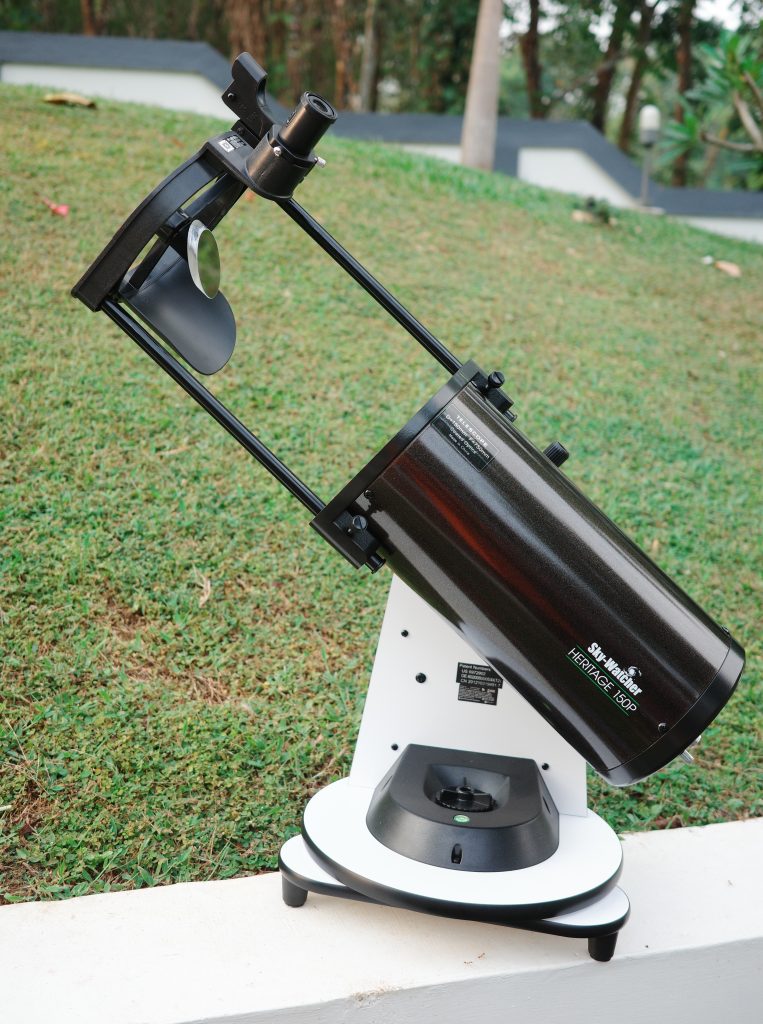
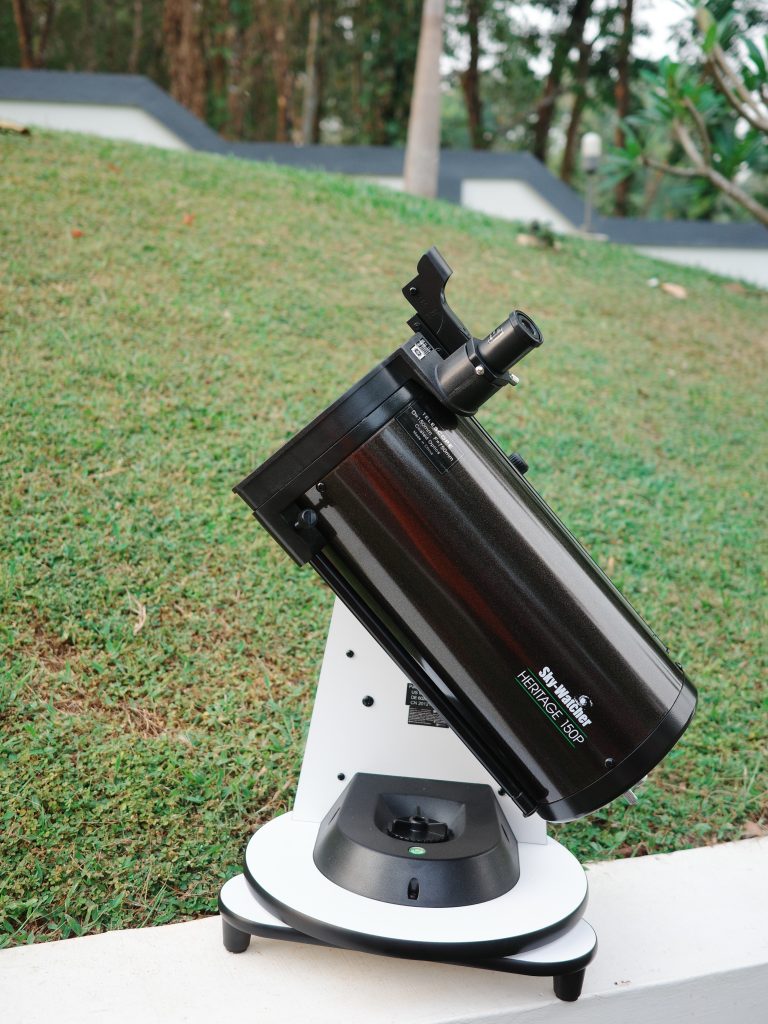
Due to the open tube, the Virtuoso GTi 150P’s mechanical design does make a couple of compromises. The openness of the tube means that stray light from nearby sources, such as streetlights or even the Moon, can get in. This is in addition to the general contrast loss from a light-polluted sky. Right across from the secondary mirror, I can see a small baffle as a partial solution, but this is not enough. My go-to solution to the stray light problems of the 150P is to construct a DIY shroud out of foam, which takes just a few minutes and costs nothing. This will also shield the optics from dew, bugs, dust, or curious hands.
The other weak link of the 150P optical tube is its 1.25”-only helical focuser. To keep the weight down, rather than providing a traditional metal Crayford or rack-and-pinion focuser, Sky-Watcher has gone with a simple helical focuser (essentially a giant threaded screw with a hole in the middle) made entirely out of plastic.
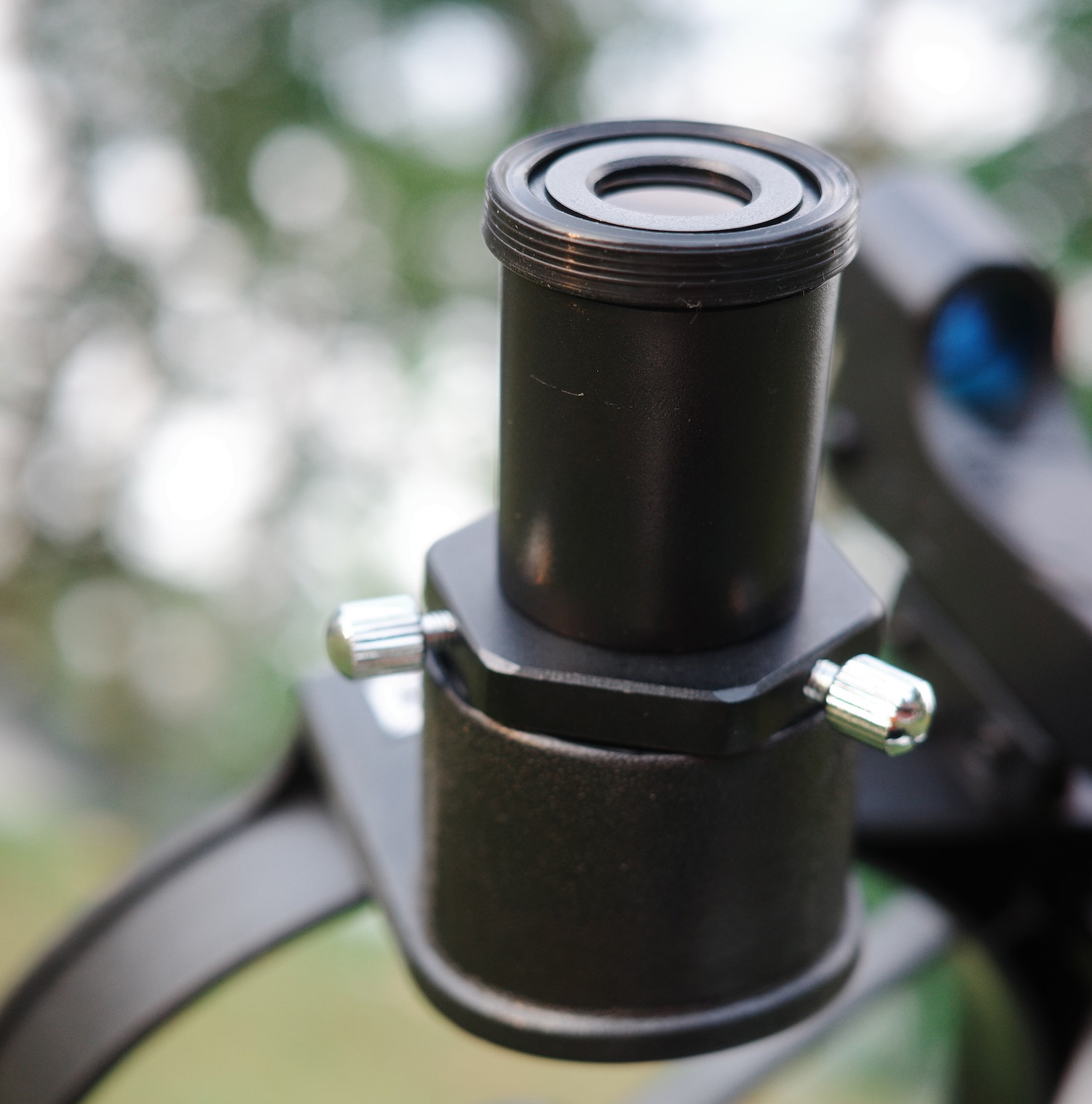
Fine adjustment with its focuser is a little bit tricky, and it sags under the weight of heavy eyepieces. I would not recommend you stick UWA eyepieces and Barlow lenses into this telescope. However, given that most of the accessories that will cause you problems cost a good chunk as much as the Virtuoso GTi 150P itself does, this isn’t a problem you’re likely to experience, especially for beginners.
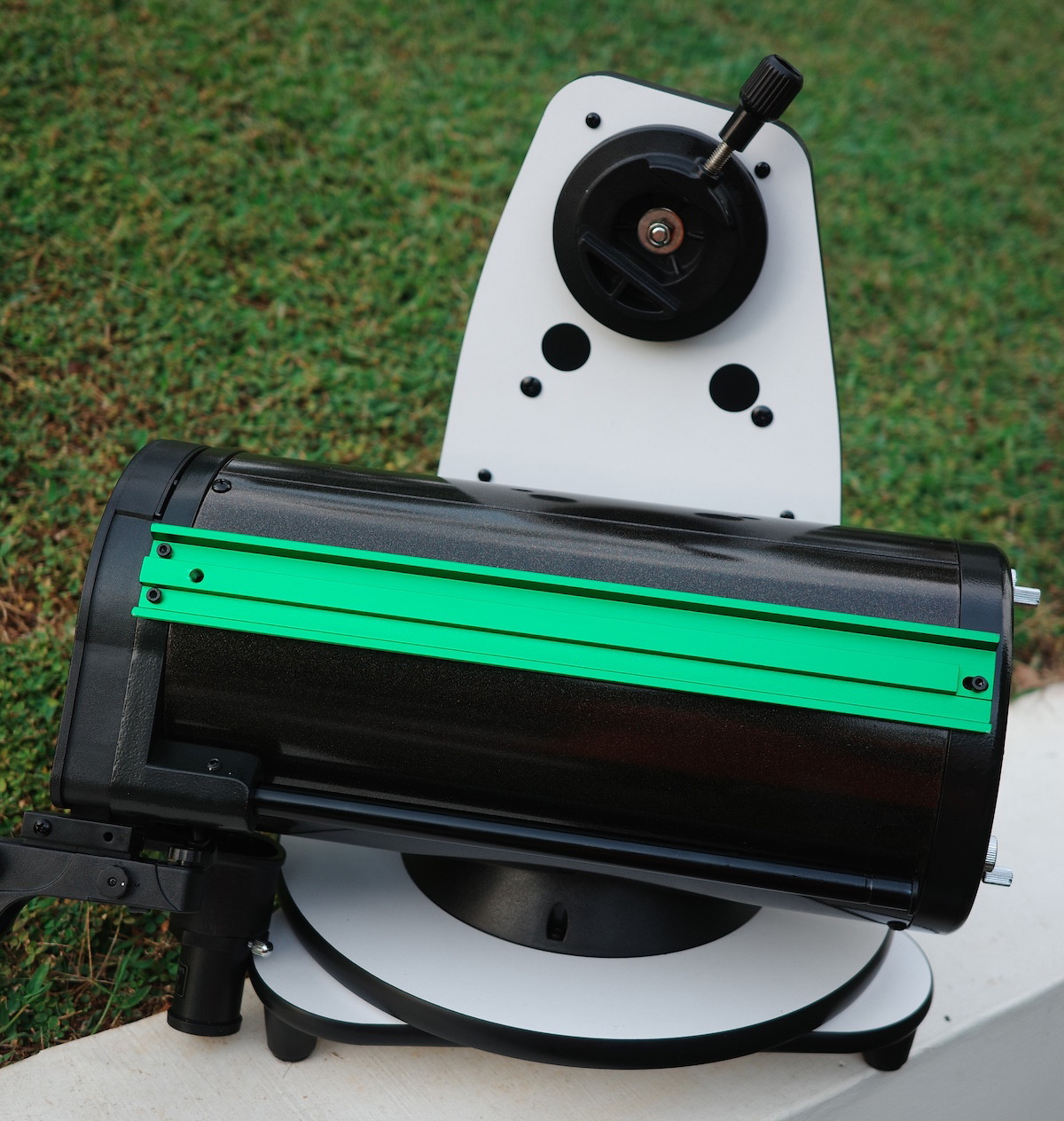
A Vixen-style dovetail rail is used to connect the optical tube of the Virtuoso GTi 150P to its mount. This means I could technically put the tube on another mount. But given the open-frame design and lack of rotating tube rings, I’d end up with the eyepiece in an uncomfortable position. The scope is also subject to mechanical flexure to work as a deep-sky astrophotography instrument, even though the optics are ideal for such.
Accessories
The Sky-Watcher Virtuoso GTi 150P comes with the same set of accessories as the Heritage 150P and 130P—a pair of 1.25” “Super” eyepieces of 25mm and 10mm focal length, yielding 30x and 75x magnification, respectively, with the 750mm focal length 150P.
RECOMMENDED BUY FOR THE GREAT EYEPIECES
The eyepieces, as I’ve noticed, are plastic-bodied and lightweight, but nevertheless well-made with all-glass optics of the Konig configuration, which works pretty well at f/5. It has more eye relief than a standard Kellner or Plossl. Even the 10mm Super eyepiece is quite comfortable to look through compared to a 10mm or 9mm Plossl/Kellner provided by most manufacturers, where I practically have to jam my eye into it to see anything with it.
Buy Virtuoso 150P from HighPointThe GTi 150P’s provided Super 1.25” eyepieces both have an apparent field of view of around 55 degrees. With the 25mm, this translates to a massive true field of about 1.8 degrees across in the sky, or about 3.5 times the size of the full Moon. That’s perfect for fitting large open star clusters, nebulae, and the Andromeda Galaxy.
The 10mm’s mere 75x magnification is hardly pushing the capabilities of the 150P’s optics. You’ll want a high-power eyepiece giving you something in the range of 100–200x for the best possible views of the planets, small deep-sky objects, and splitting close double stars with the Virtuoso 150P.
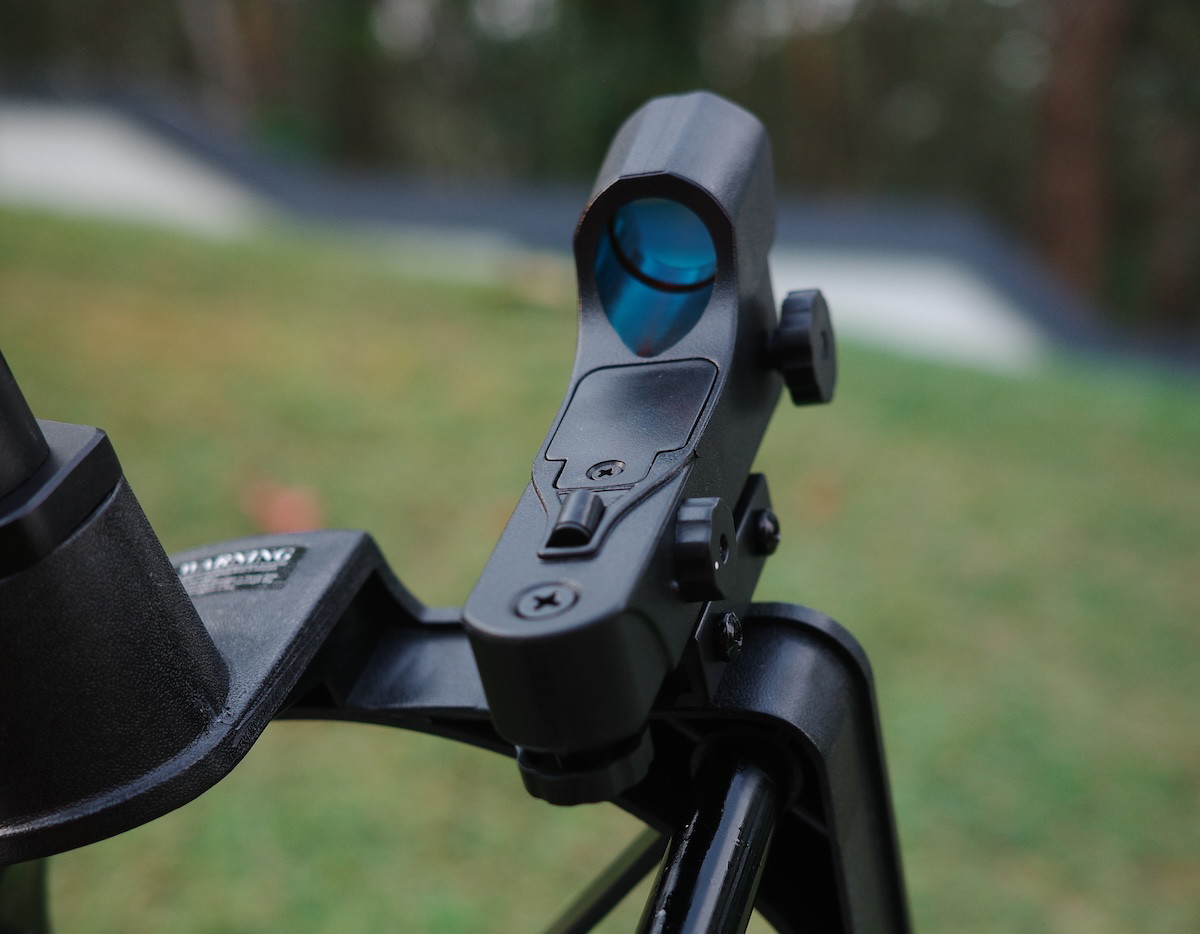
With the Virtuoso GTi 150P, Sky-Watcher gives you a standard red dot finder powered by a CR2032. This finder is, of course, just fine for aligning the GoTo mount of the 150P initially, as well as manually aiming it, thanks to the huge field of view you get at low magnification.
Mount
Internally, the Sky-Watcher Virtuoso GTi mount shares little in common with the old, tracking-only “Virtuoso” mount that Sky-Watcher used to bundle with their 90mm Maksutov.
The Virtuoso GTi is a tabletop Dobsonian (really a one-armed fork) mount with motors and clutches attached to both the altitude (up/down) and azimuth (left/right) axes.
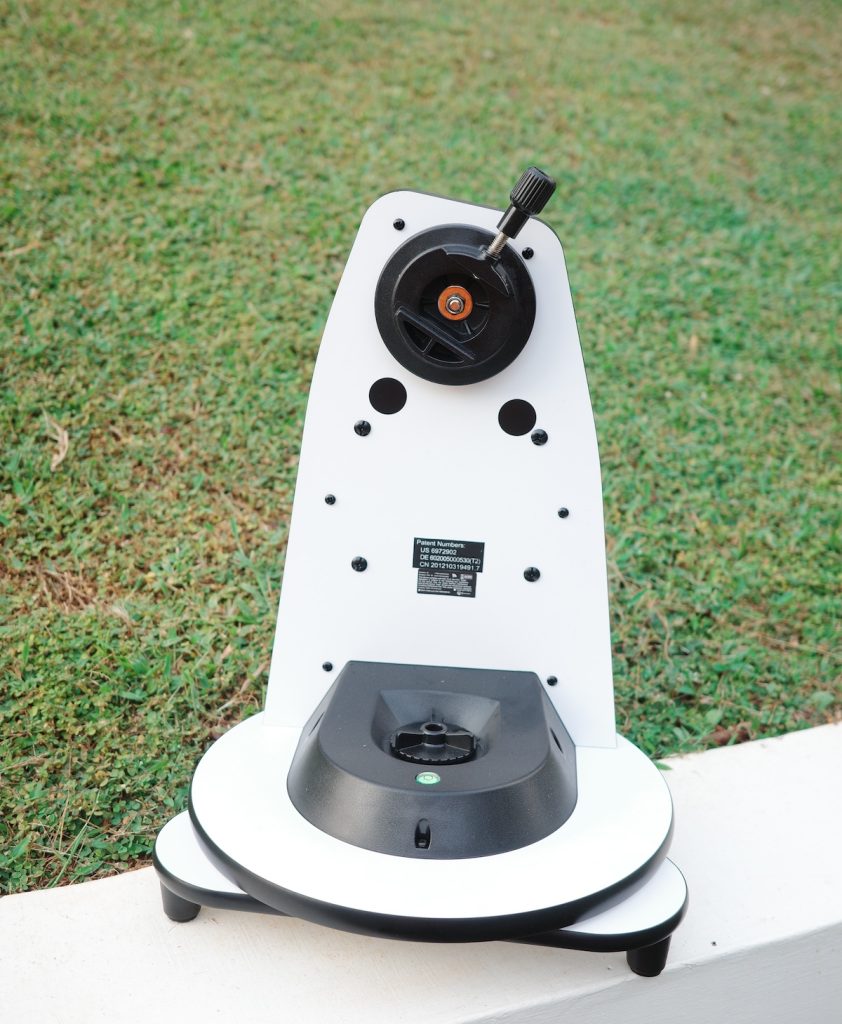
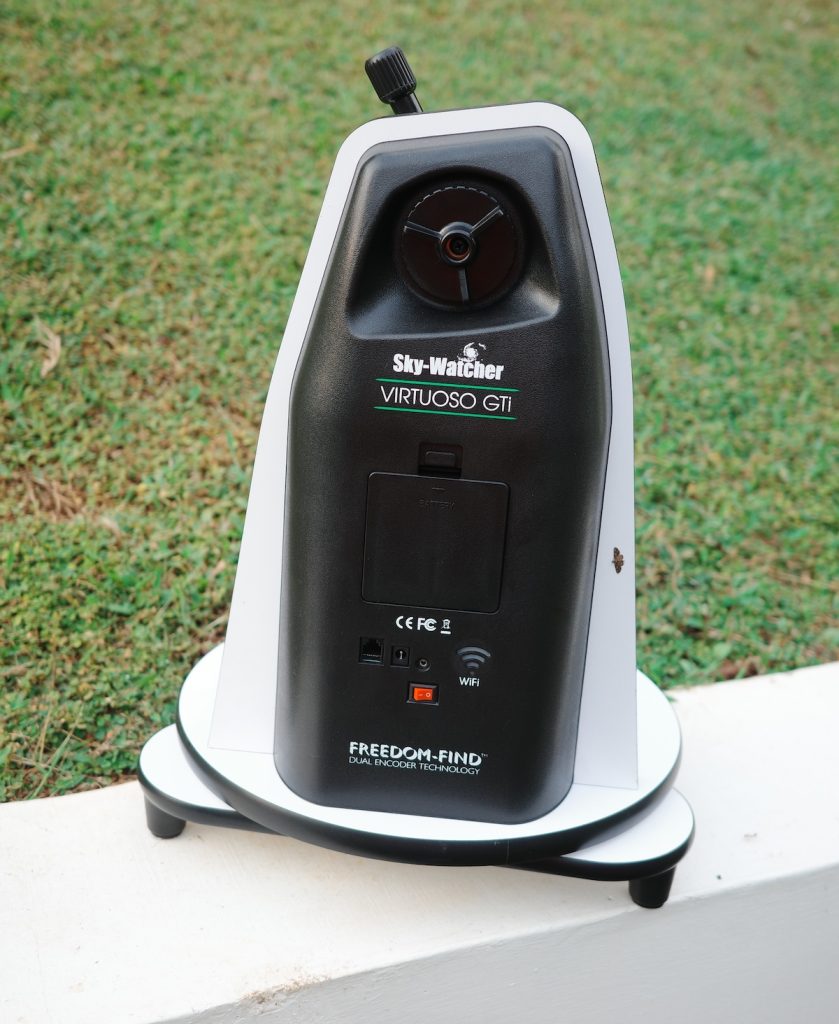
You could turn the mount on, connect it to your smartphone or tablet, and then follow a simple alignment procedure with the free SynScan app or SkySafari. Following that, the Virtuoso GTi mount will automatically slew to tens of thousands of objects of your choosing and track across the sky.
RECOMMENDED BUY FOR THE FREEDOMFIND TECH
The coolest part about the Virtuoso GTi, and a feature shared with Sky-Watcher’s new AZ-GTi mount, is that you can still unlock the mount’s clutches to aim the scope manually and switch right back to computerized mode when you need it. This is done without any effect on the GoTo alignment or tracking from aiming the scope by hand. Sky-Watcher brands this as their “FreedomFind” technology, but it’s really just an extra encoder system that I think should be on all GoTo mounts by default nowadays.
Buy Virtuoso 150P from HighPointBeing a tabletop scope, it’s already important to find a stable and elevated surface to set the Virtuoso GTi 150P atop to use it. The GoTo functionality and its tight mechanical tolerances make finding a surface with suitable stability paramount. Setting the scope on a saggy or flexible surface will impede or simply ruin the accuracy of the GoTo mount and tracking altogether, as well as make for a dismal observing experience due to the unsteadiness.
I would recommend a bar stool or a milk crate to put the GTi 150P on, or alternatively, you can build a stand yourself for relatively little cost.
Should I buy a Used Sky-Watcher Virtuoso GTi 150P?
A used Sky-Watcher Virtuoso GTi 150P is unlikely to be very old, as these telescopes only debuted in 2022. However, be sure to check that the electronics work (though the telescope will work just fine without them). The lower part of the tube can be easily dented; small dents will not affect anything, and big ones can usually be hammered out.
Alternative Recommendations
The Sky-Watcher Virtuoso GTi 150P is, of course, my top pick in its price range, but I understand that some might want a different telescope with different capabilities, price, etc. So here are my picks. It should be noted that none of these telescopes are motorized or computerized; it’s a miracle that Sky-Watcher offers the GTi 150P at such a low price.
- The manual Heritage 150P, as well as the smaller Heritage 130P, are both great choices—and very similar to the GTi 150P—if you don’t want or can’t afford the GoTo upgrade.
- The free-standing Apertura AD6 and Sky-Watcher 6” Classic Dobsonians are easier to collimate than the 150P tabletop scope and don’t need a table but are significantly bulkier and suffer from a narrower field of view.
- For a bit more money, an 8” Dobsonian like the Apertura AD8 will blow a 6” scope out of the water in terms of viewing quality with the same portability factor as a full-sized 6” f/8 telescope. Celestron’s StarSense Explorer 8” Dobsonian also features computer-aided (albeit not motorized) pointing capability.
Aftermarket Accessory Recommendations
The Sky-Watcher Virtuoso GTi 150P can handle up to 300x magnification thanks to its whopping 6” of aperture and quality optics, but realistically, there isn’t much benefit in going above 200x or so. I would recommend you get a 6mm “redline” eyepiece for 125x magnification with the 150P, and if you must have a bit more magnification, a 4mm “planetary” eyepiece will yield 188x magnification. At this level of magnification, you’ll have no trouble resolving globular star clusters’ outer members, splitting tight double stars, or watching shadow transits of Jupiter’s moons.
While they certainly aren’t a cure-all for light pollution, a good nebula filter—particularly a narrowband, ultra-high-contrast (UHC) unit—can significantly shore up the contrast of bright nebulae under almost any sky conditions, making them a useful addition to your observing toolkit.
What can you see with Virtuoso GTi 150P?
The quality of your deep-sky viewing with any telescope is going to be heavily influenced by how light-polluted the skies are where you observe. As mentioned before, it’s very important to construct a shroud for the Virtuoso GTi 150P regardless of your sky conditions, but this is paramount if you have any significant light pollution; otherwise, the view will be washed out entirely.
The GTi 150P is great for looking at large open star clusters no matter what the sky looks like because it has a wide field of view. Objects like the Double Cluster in Cassiopeia or the Wild Ducks Cluster (M11) in Scutum are great targets, as is the famous Pleiades cluster (M45) in Taurus. You can also start to resolve the brightest globular clusters with the 150P, such as M13, M15, and M22, into individual stars under most viewing conditions, though you’ll need to use 100x magnification or more with the 150P to do so easily.
Under dark skies, the Virtuoso GTi 150P can also do a decent job of observing galaxies. You can see dust lanes in large, brighter galaxies like M31, M64, and M82, and you can tell that galaxies like M51 and M101 have spiral arms, though the arms themselves are just out of reach. The Virgo Cluster shows dozens of members, and numerous galaxy groups can be observed too.
Nebulae like Orion (M42) and the Lagoon (M8) can be seen under moderately light-polluted conditions with the Virtuoso GTi 150P, but the darker the skies, the better they’ll look. A UHC filter also helps bring out details and will reveal targets like the Veil, North America Nebula, or the Helix Nebula, which can be hard to see without a filter, even under dark skies. Small planetary nebulae like the Ring, Cat’s Eye, and Blue Snowball can also be seen; 6” of aperture begins to show the blue and green coloration in some of these objects.
The Virtuoso GTi 150P delivers excellent performance on Solar System objects too. You can easily see the phases of Venus, but you need a strong telescope and a clear night to see Mercury’s phases. Neither planet has any surface features that an amateur telescope can show. Mars shows its polar ice cap and any ongoing dust storms easily, while a few dark markings can be seen on its surface when the planet is close to Earth and conditions are good. You can, of course, see Jupiter’s moons easily at any magnification; high power shows their disks and dark shadows when they transit across Jupiter, along with Jupiter’s colorful pastel cloud belts, festoons, and the Great Red Spot. Saturn’s rings can be seen along with the razor-thin Cassini Division within them; its linear, dull cloud belts are visible; and a handful of dim moons appear around it as star-like pinpoints with the 150P. You can see Uranus and Neptune as fuzzy greenish and bluish splotches, but the GTi 150P lacks sufficient aperture to reveal any of Uranus’ moons, while Neptune’s moon Triton is a difficult catch. Pluto is just beyond the reach of a 6” telescope under dark skies, as it has receded from the Sun and continues to dim; by 2100, the icy world will be so distant that it will be beyond the reach of even most 12” telescopes under ideal viewing conditions.
Astrophotography with GTi 150P
As the Sky-Watcher Virtuoso GTi mount provides tracking, astrophotography with the GTi 150P is, in fact, possible—though you’re limited to the Moon and planets. Your smartphone will suffice for the Moon; for planetary imaging, all you need to do is get a functioning laptop and pop in a 3x or 5x Barlow lens along with a high-speed CMOS camera. You’ll be able to get great shots of Mars, Jupiter, and Saturn, showing a bit more detail than you’re likely to be able to spot visually, especially with good seeing conditions and post-processing.
Deep-sky astrophotography is, for the most part, not possible nor practical with the Virtuoso GTi 150P for various reasons, including the alt-azimuth nature of the mount, insufficient tracking accuracy, and mechanical flexure in the optical tube and focuser under the heavy weight of a DSLR or cooled camera.

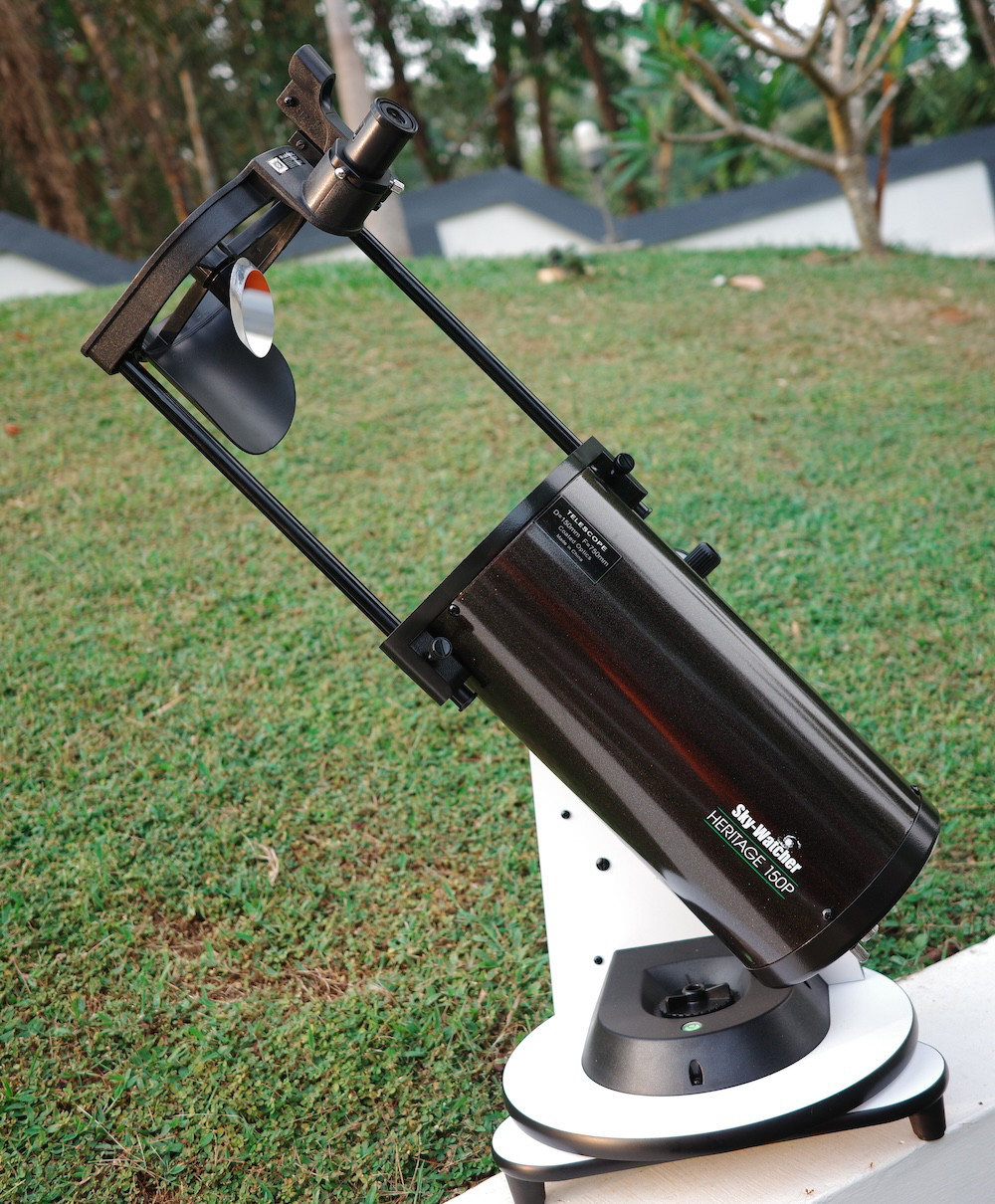


Thank you for the detailed review!
I’ve managed some basic deep sky astrophotography with this telescope. I used a cheap, second hand, mirrorless, Panasonic Lumix GF3. This is an extremely light camera and doesn’t place too much stress on the collapsible struts. The field of view is just right for the Andromeda galaxy, Triangulum galaxy and Orion Nebula. I wouldn’t say these were great pictures by modern standards, but they were certainly a vast improvement on using a smartphone.
A 1.25 inch to micro four thirds camera adapter is also needed.
Zane, I got the Virtuoso GTi 150p based mainly on your review. It is a great value even for more experienced astronomers because of its 6″ parabolic mirror, Go-To, and tracking. I just have one issue with it; mine has quite a bit of backlash (almost 1/2″ of play) in the altitude axis, even with the clutch locked down. When changing an eyepiece, this play tends to move the object out of view, which is frustrating. Short of taking the thing apart, I’ve purposely “unbalanced” the OTA to be slightly top-heavy, which seems to help keep the OTA resting on the downward side of its play. Do you have any other tips for working with this otherwise excellent scope?
Update: Fortunately, I sent the scope back to Sky-Watcher (on warranty) and they fixed the altitude backlash. There’s no backlash now, and the Virtuoso GTi 150p’s Go-To and tracking is now much better. The mechanical stability of the mount now allows using eyepieces “sequentially”; I use my 25mm for initial Go-To, then center the object, then switch to say, a 12mm, re-center if necessary, then switch to a 5mm (150X). In fact, the mount is now capable of splitting Epsilon Lyrae (the Double-Double) with my 5mm and 2X Barlow at 300X…and keeping it in view for at least 30 minutes.
Thanks for the detailed review. I have an apetura 8″ dob, but sometimes dragging it out of the house into the yard is a bit of a hassle when I have other things to do. I was looking for something that I could easily bring outside or put in my car and drive to a darker site. Your review really helped me to decide. Thank you!
You’re welcome, it’s a great scope for that purpose. Enjoy!